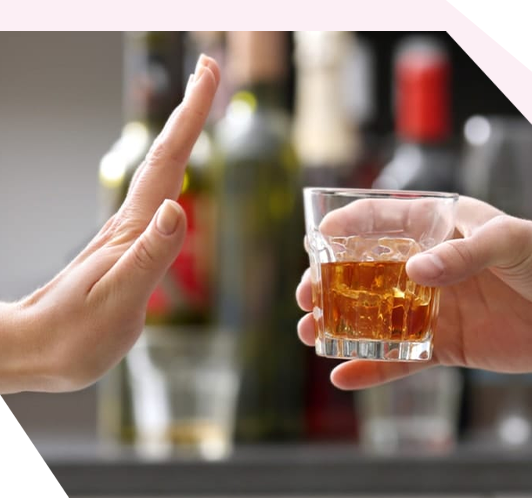Alcoholism is a serious and often debilitating disease that affects millions of people worldwide. If you or a loved one is struggling with alcohol addiction, seeking professional help is crucial for recovery. But with so many rehab options available, how do you find the best alcoholism rehab near you? In this comprehensive guide, we’ll explore the different types of rehab, what to look for in a rehab center, and how to find the best resources for your recovery journey.
Types of Alcoholism Rehab Near Me
Before diving into the specifics of finding the best alcoholism rehab, it’s important to understand the different types of rehab available. The most common types of alcoholism rehab include:
Inpatient Rehab
Inpatient rehab, also known as residential rehab, involves staying at a rehab facility for a set period of time, typically 30-90 days. This type of rehab provides a structured and supportive environment for individuals to focus solely on their recovery. Inpatient rehab is often recommended for those with severe alcohol addiction or those who have relapsed after previous attempts at recovery.
Outpatient Rehab
Outpatient rehab allows individuals to receive treatment while still living at home. This type of rehab typically involves attending therapy sessions and support groups a few times a week. Outpatient rehab is a good option for those with mild to moderate alcohol addiction or for those who have completed inpatient rehab and need continued support.
Luxury Rehab
Luxury rehab centers offer a more upscale and luxurious experience for those seeking treatment for alcoholism. These facilities often have amenities such as private rooms, gourmet meals, and spa services. While luxury rehab may be appealing, it’s important to consider the cost and whether it aligns with your budget and recovery goals.
What to Look for in a Rehab Center
When searching for the best alcoholism rehab near you, there are several key factors to consider. These include:
Accreditation and Licensing
It’s important to ensure that the rehab center you choose is accredited and licensed by the appropriate governing bodies. This ensures that the facility meets certain standards of care and has qualified staff to provide treatment.
Treatment Approaches
Different rehab centers may use different treatment approaches, so it’s important to research and find a center that aligns with your personal beliefs and goals. Some common treatment approaches for alcoholism include cognitive-behavioral therapy, group therapy, and 12-step programs.
Staff Qualifications
The staff at a rehab center play a crucial role in your recovery journey. Look for a facility that has qualified and experienced professionals, such as licensed therapists and medical staff, who specialize in treating alcohol addiction.
Aftercare Support
Recovery from alcoholism is an ongoing process, and it’s important to have support after completing a rehab program. Look for a rehab center that offers aftercare support, such as alumni programs, to help you maintain your sobriety and continue your progress.
Finding Rehab Resources
In addition to finding the right rehab center, there are other resources that can aid in your recovery journey. These include:
Support Groups
Support groups, such as Alcoholics Anonymous (AA), provide a safe and supportive environment for individuals to share their experiences and receive support from others who are also in recovery. These groups can be found in most cities and are often free to attend.
Online Resources
The internet is a valuable tool for finding information and resources for alcoholism rehab. There are many online forums and communities where individuals can connect with others in recovery and find support and advice.
Professional Referrals
If you’re unsure where to start in your search for the best alcoholism rehab near you, consider reaching out to a healthcare professional for a referral. Your doctor or therapist may have recommendations for reputable rehab centers in your area.
How to Find the Best Alcoholism Rehab Near You
Now that you know what to look for in a rehab center and the resources available, here are some steps to help you find the best alcoholism rehab near you:
1. Determine Your Needs
Before beginning your search, it’s important to assess your individual needs and goals for recovery. This will help you narrow down your options and find a rehab center that aligns with your specific needs.
2. Research Rehab Centers
Once you have a clear understanding of your needs, research rehab centers in your area that offer the type of treatment you’re looking for. Look for reviews and testimonials from previous patients to get an idea of the quality of care provided.
3. Consider Your Budget
Rehab can be expensive, so it’s important to consider your budget when choosing a rehab center. Some facilities may offer financial assistance or payment plans, so be sure to inquire about these options.
4. Tour the Facility & Or See Photos & Videos
Before making a decision, it’s important to tour the facility and get a feel for the environment. Even if youre traveling to a different state or town, getting on Instagram, YouTube or their Google Maps location will give you a good idea of what the facilities look like as well as treatment types offered. This will give you a better understanding of the living conditions and the overall atmosphere of the rehab center.
5. Ask Questions
Don’t be afraid to ask questions when researching and touring rehab centers. This will help you gather all the necessary information to make an informed decision.
What To Expect During Alcohol Rehab
Alcohol rehab is a comprehensive and structured treatment program designed to help individuals overcome alcohol addiction and achieve long-term sobriety. During alcohol rehab, individuals can expect a supportive and therapeutic environment that provides the necessary tools and resources for recovery. Here is an overview of what to expect during alcohol rehab:
1. Assessment and Evaluation:
Upon admission to an alcohol rehab facility, individuals will undergo a thorough assessment and evaluation process. This helps the treatment team understand the extent of the addiction, any co-occurring mental health issues, and the individual’s specific needs.
2. Detoxification:
For individuals with severe alcohol addiction, a medically supervised detoxification process may be necessary. This involves safely managing withdrawal symptoms as the body adjusts to the absence of alcohol.
3. Individualized Treatment Plan:
A personalized treatment plan will be developed based on the individual’s assessment results. This plan may include a combination of therapy, counseling, support groups, and other evidence-based practices.
4. Therapy and Counseling:
Therapy sessions, both individual and group, play a critical role in alcohol rehab. Individual therapy provides a safe space to explore underlying issues contributing to alcohol addiction, while group therapy allows individuals to connect with others facing similar challenges.
5. Education and Skill Building:
Alcohol rehab programs often include educational sessions to help individuals understand the science of addiction, develop coping mechanisms, and learn relapse prevention techniques. These sessions empower individuals to make healthier choices and develop life skills necessary for long-term sobriety.
6. Supportive Community:
Alcohol rehab provides a supportive and understanding community of peers and professionals who are also on the journey to recovery. This community offers encouragement, accountability, and a sense of belonging.
7. Aftercare Planning:
As individuals near the completion of their rehab program, the treatment team will work with them to develop a comprehensive aftercare plan. This plan may include ongoing therapy, support group involvement, outpatient services, and other resources to support continued sobriety.
It’s important to note that every alcohol rehab program is unique, and the specifics of the treatment process may vary. The duration of alcohol rehab programs can range from a few weeks to several months, depending on the individual’s needs and progress. The goal of alcohol rehab is to provide a safe and supportive environment where individuals can heal, learn new coping strategies, and establish a strong foundation for a sober and fulfilling life.
Alcoholism Treatment Centers Near Me
Finding the best alcoholics rehab near me is a crucial step in your recovery journey. By understanding the different types of rehab, what to look for in a rehab center, and utilizing resources, you can find a facility that meets your needs and helps you achieve long-term sobriety. Remember, recovery is a journey, and with the right support and resources, you can overcome alcohol addiction and live a fulfilling life.
BEER ADDICTION AND ABUSE
Beer is an alcoholic drink that is typically made from water, barley, hops, and yeast. However, when compared to wine or hard liquor, beer usually has the lowest alcohol content by volume (ABV). The ABV for beer usually ranges from about 2 to 12 percent, especially with the most commonly consumed beers. For most people, it takes 3 to 5 beers to be over the legal driving limit. Beer is commonly present in drinking games, particularly on college campuses and during happy hours for professionals. These are also very popular during major sporting events.


WINE ADDICTION AND ABUSE
Wine is made from fermented grapes or other fruits, including berries or pomegranates. Commonly sold as white or red, it is available in a variety of flavor profiles. There are many different types. White wines include chardonnay, pinot grigio, and moscato. Meanwhile, red wines include merlot, cabernet, and pinot noir. The varieties are based on the type of grape used. cabernet, and pinot noir. The varieties are based on the type of grape used. Wine has a more concentrated amount of alcohol compared to beer. An average pour of wine, which is 5 oz., is equivalent in alcohol content to 12 oz. of beer. It is often consumed at dinner parties, and is often considered a “classy” drink. This status makes it a bit harder to spot when someone has a wine-related problem.
LIQUOR ADDICTION AND ABUSE
Liquor is an umbrella term for hard alcoholic drinks or spirits. This includes vodka, gin, tequila, rum, and whiskey. This means that liquor has a much higher ABV compared to beer and wine. It is often mixed with sodas, juices, or water. The average size of a liquor pour is 1.5 oz. When not mixed into drinks, liquor is consumed as a shot. Drinking liquor mixed with soda can actually cause quicker intoxication because carbonation speeds up the absorption of alcohol into the bloodstream. The lower liquid content of shots actually makes it easier to consume. However, this leads to a higher risk of abuse and subsequent drunkenness. Alcohol withdrawal may seem overwhelming but seeking the right medical help is necessary to get sober.
ALCOHOL AND OTHER DRUGS
ALCOHOL AND OTHER DRUGS
Alcohol and drugs are often taken together, especially in todayʼs culture. But this activity is particularly dangerous because alcohol does not mix well with other drugs. This means the risk of an overdose is very high, and can even be life-threatening. Though alcohol on its own can be dangerous, mixing it with other drugs such as painkillers and benzodiazepines can quickly prove to be fatal.
PHYSICAL SIGNS OF ALCOHOLISM
Now that the severity of alcoholism and alcohol abuse have been established, it is important to look for the physical signs of alcoholism. Everyone experiences addiction differently. A person who drinks the same amount as somebody else will still suffer from different effects because of different factors such age, gender, health condition, co-occurring disorders, etc. Not to mention the fact that other environmental factors can influence the physical effects of alcohol abuse. A personʼs drinking habits, their drink of choice, their drinking history, and other factors can change the way their body responds.
LOSS OF MEMORY
LOSS OF APETITE
LOSS OF LIBIDO
SOCIAL CONSEQUENCES OF ALCOHOLISM
This is another aspect of alcoholism that impacts a person severely. But the social consequences of alcoholism are not always discussed. Drinking excessively can interfere with the way a person maintains their relationships, both personal and professional. Alcoholics are likely to sever ties with people who are important to them, either accidentally or intentionally.
ALCOHOL TREATMENT AND REHAB
If someone in the family is struggling with this type of addiction, or any kind of addiction, it is important to remind them that they are not alone. They do not need to go through this difficult process on their own. Many people who are dealing with alcohol addiction find it difficult to quit without the support of others. The good news is that there are many alcohol rehab facilities out there with comprehensive treatment programs and skilled professionals who can help in all aspects of addiction.

THE FIRST STEP OF RECOVERY FROM ALCOHOL
The first step is recognizing and accepting the fact that th ere is a problem and that it has to be fixed. With the signs and symptoms mentioned above, it should be possible to tell if a person has a drinking problem. Looking for a rehab facility and allowing them to create a treatment plan based on the patientʼs condition is the next step.
ALCOHOL ADDICTION MEDICATIONS
Inpatient programs are designed to keep the person away from their environment—meaning they get to stay away from the usual temptations and stressors. The programs typically last 30 days, but it can last even longer depending on the treatment approach.Because of the focused nature of inpatient treatment, these programs have a high success rate. Residential treatment is recommended for those who have moderate to severe alcohol addiction


ONGOING RECOVERY FROM ALCOHOL
Inpatient programs are designed to keep the person away from their environment—meaning they get to stay away from the usual temptations and stressors. The programs typically last 30 days, but it can last even longer depending on the treatment approach. Because of the focused nature of inpatient treatment, these programs have a high success rate. Residential treatment is recommended for those who have moderate to severe alcohol addiction.
About Huntington
Rehab Treatments In Huntington West Virginia
- Alcohol Addiction Huntington
- Alcohol Detox Huntington
- Alcohol Rehab Huntington
- Alcohol Rehab for Veterans Huntington
- Finding the Best Alcoholism Rehab Near Me in Huntington
- AA Free & Confidential Alcoholics Anonymous Helpline Huntington
- Benzodiazepines Rehab Near Me Huntington
- Christian Drug Rehab Huntington
- Drug Rehab-addiction Treatment Centers Near You Huntington
- Dual Diagnosis Treatment Centers Near You Huntington
- (EAP) Employee Assistance Programs Huntington
- Fentanyl Huntington
- Find 30-Day Inpatient Drug Rehabs Near You! Huntington
- Find 60 Day Inpatient Drug Rehabs Near You! Huntington
- Find 90 Day Inpatient Drug Rehabs Near You! Huntington
- Hydrocodone Huntington
- Inpatient Drug and Alcohol Rehab Near Me Huntington
- Inpatient Drug Rehab Treatment Program Huntington
- Luxury Drug & Alcohol Addiction Treatment Centers Huntington
- Mental Health, Addiction, and Drug Rehab Huntington
- NA Hotline, Narcotics Anonymous 24 Hour Hotline Huntington
- Online Therapy|Mental Health|Substance Abuse|Dual Diagnosis Huntington
- Mental Health Online Therapy | Teletheraphy Huntington
- Outpatient Drug Rehab Near Me Huntington
- Oxymorphone Huntington
- Prescription Drugs Huntington
- Student Drug Rehab Huntington

